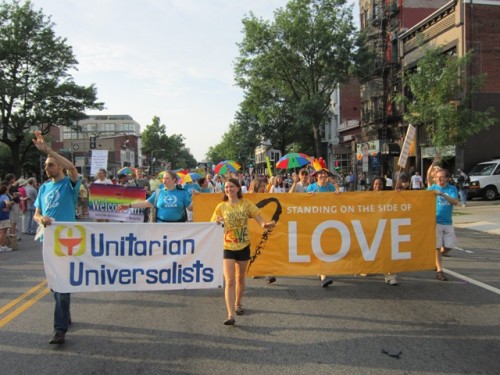Joseph Laycock, scholar and author of “Vampires Today: The Truth about Modern Vampirism,” examines media coverage of the killing of two boys and one woman over the span of four years in Mexico, allegedly the work of Santa Muerte cultists. Laycock’s Religion Dispatches piece argues that “these murders will likely have lasting consequences for alternative religion in North America,” that they are a “Manson moment” that will have potentially harmful reverberations in the years to come.
“It goes without saying these murders are unconscionable, and a tragedy. But attempting to find a grand pattern, or a reason, in a connection to so-called ritualistic violence brings authorities no closer to preventing such crimes—while greatly increasing the likelihood that innocent people will be persecuted.
It is almost a certainty that at some point in the future the events that have unfolded in Nacozari will be presented as “proof” that Santa Muerte is an inherently violent tradition. As Saint Death’s popularity spreads and the Latino American population continues to grow, this is not a theory we can afford to entertain.
If we can accept that not all Beatles fans are Charles Manson, we must also have faith that not all who pray to Santa Muerte are Silvia Meraz.”
Will these incidents provide the tinder necessary to fuel a new moral panic in the United States? We’ve already seen some declare that illegal immigration wasn’t simply a problem of policy, economics, or laws, but a religious war between antidemocratic religious “fanatics” and Western Christendom. Nor is Santa Muerte isolated in this rhetoric, as Santeria has also been invoked in the increasingly polarizing debate over immigration policy in America. These tensions seem likely to increase as the religious landscape in Mexico becomes increasingly diverse (and the diversity continues to filter north). R. Andrew Chesnut, author of “Devoted to Death: Santa Muerte, the Skeleton Saint,” notes that the once-dominant Catholic church faces “significant competition from Pentecostals, neo-Christians, such as Mormons and Jehovah’s Witnesses, and even “heretical” folks saints, such as Santa Muerte and Jesus Malverde.”
“Among two of the most dynamic religious practices in the Mexican megalopolis [of Mexico City] are the cults of Saint Jude, patron of lost causes, and Santa Muerte. Centered in the notorious barrio of Tepito, devotion to Saint Death takes place beyond the pale of the Church. Just a few miles away, the Church of Saint Hippolyte draws tens of thousands of devotees to its monthly celebrations of Saint Jude, who shares Santa Muerte’s devotional base of marginalized youth.”
Mix growing outsider faiths, increasingly inflamed rhetoric over the issue of illegal immigration, and reliably bad journalism on often misunderstood religions like Santeria and Palo, with an incident that seems to validate the worst fears of those who are already negatively disposed towards non-Christian or syncretic traditions and you have a potential powder keg. Isolated criminal actions can be, and have been, used to prove the existence of a widespread malefic network. In “Satanic Panic: The Creation of a Contemporary Legend,” Jeffrey Victor talks about how Charles Manson and Jim Jones were used to create a stereotype of criminal Satanism.
The stereotype of criminal Satanism merged imagery of fanatical religious cults with that of psychopathic criminals like Reverend Jim Jones and Charles Manson. This dramaic imagery had great mass media appeal. Satanic cult stories were first able to find a channel to a national audience when they appeared in small town newspaper reports as a possible explanation for an epidemic of spurious claims about cattle mutilations. Later, small town newspaper reports about a wide variety of crimes, from a cemetary vandalism to serial murder, began to attribute the crimes to “Satanists.”
Replace “Satanism” with “Santeria” and you can see the pattern emerging once again. “Santeria Panic,” fueled by fear, bad journalism, and extreme events like these “sacrifices” to Santa Muerte. In fact, back in 2010 Kenneth Ross, the law enforcement chief for the Westchester Society for the Prevention of Cruelty to Animals, made explicit the link between the old panic, and the one that seems ready to emerge.
“I think what happens is you have different cultures coming into the United States, and when the cultures come in they bring their traditions and they bring whatever they practice,” said Ross, the SPCA police chief. “If you look back in the ’70s … Satanism was the big thing and everybody was dabbling in Satanism. I’m sure it happens and that’s how different sects are created within Santeria,” Ross said. “But I don’t know if it’s the dabblers or is it just the influx of different nationalities that bring their own traditions?” the SPCA police chief added.
So if this is the new “Manson moment,” the thing that will spark a new moral panic that could have “lasting consequences for alternative religion in North America,” it raises two practical questions for modern Pagans. How do we derail this trend, stopping it before it ruins thousands of lives as it did during the Satanic Panics of the 1980s and early 90s, and how do we form a workable political coalition with practitioners of Santeria, Palo, Vodou, and other groups that will no doubt inhabit the eye of such a storm?
During the recent Hindu-Pagan panel at PantheaCon 2012, I suggested that our faith’s friendly interactions move to the next stage, that we form a national advocacy group that merges our resources and concerns. Perhaps the timetable on that needs to be moved up and expanded. Considering the amount of overlap between modern Paganism and the African/Caribbean diasporic religions, we certainly can’t afford to simply claim it’s not our struggle. A new moral panic about non-Christian faiths would damage us all, and that’s something none of us can afford at this critical juncture in our movement.















